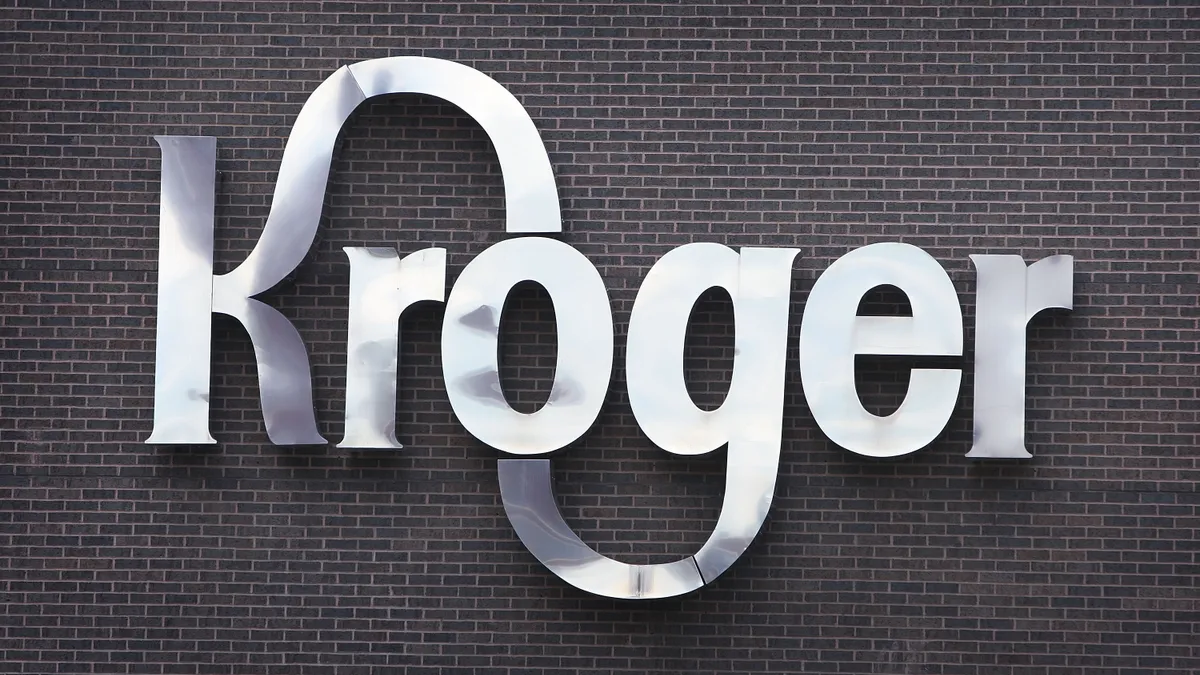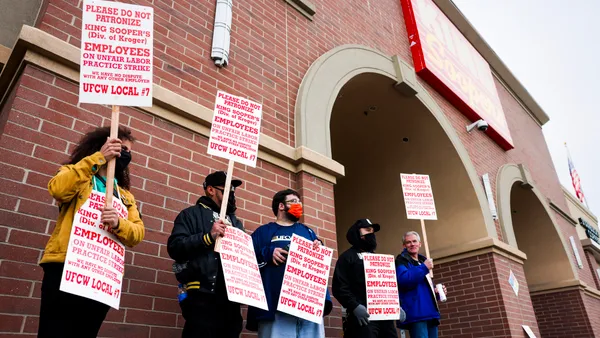Dive Brief:
- Kroger reported a 3.1% increase in year-over-year identical sales for the third quarter — its first increase in the key metric this fiscal year — as at-home consumption trends continue nearly two years into the pandemic.
- The grocer also reported total sales ($31.9 billion) and net earnings ($589 million) that beat Wall Street analysts’ expectations, causing the company’s stock price to jump more than 10% by midday Thursday.
- Kroger executives said they’re using extra warehouse space to help manage supply chain strains and strategically holding back price increases amid record inflation in order to boost customer loyalty.
Dive Insight:
Kroger’s return to positive comps this most recent quarter indicates that the company is building off its elevated sales last year to achieve higher long-term growth.
It also underscores the ongoing strength of supermarket shopping as consumers continue to work and cook from home — trends that are becoming “structural, and not temporary,” Chairman and CEO Rodney McMullen said during the company’s earnings call Thursday.
McMullen pointed to the strength of Kroger’s fresh product categories, which are outpacing sales growth across the company. He noted that shoppers are continuing to favor larger pack sizes and are shifting toward premium products like its Murray’s Cheese brand and the natural and organic products it sells.
Like other retailers, Kroger’s gross margins declined year-over-year due to higher costs related to widespread supply chain disruption. But the 41-basis-point decline was an improvement over the 60-point decline it experienced in Q2, indicating the company is doing a better job of managing through shortages.
McMullen and Chief Financial Officer Gary Millerchip said Kroger is utilizing extra warehouse space it acquired early in the pandemic to store and distribute products. It’s also leaning on its scale, longstanding supplier relationships and extensive private label production facilities, they noted.
Kroger reported a 49-basis-point drop in operating and administrative expenses compared to last year even as it onboarded more than 64,000 new employees and boosted wages — a reflection of the company’s overall cost-saving measures aimed at shaving $1 billion off its budget line in fiscal 2021, Millerchip said.
Record-high inflation is also rattling consumers and retailers. McMullen said that inflation seems to be leveling off, albeit at a very high rate, and that Kroger is using its data capabilities to determine where it can pass along price increases and where to hold. “On certain items it’s an opportunity to create deeper loyalty, some of which is obvious, some of which is not,” he said.
Kroger’s digital business has slowed this year compared to 2020 as shoppers return to stores. On a two-year stack, digital sales grew 103% in Q3, and Millerchip said Kroger remains on track to meet the goal it announced earlier this year of doubling its digital sales and profitability by 2023.
Key to its digital growth is the buildout of its own e-commerce service fueled by a budding network of automated warehouses. The warehouses in Monroe, Ohio, and Groveland, Florida, that went live earlier this year are so far exceeding internal expectations, executives said. McMullen noted that average basket sizes for its service in Florida are increasing over time.
“What we believe is that as the customers begin to trust the experience and to have good experiences, we get a higher share of their total spend, and that's what we're starting to see,” he said.
Kroger recently announced it’s building two additional facilities in Florida alongside Ocado, including a micro-fulfillment site in South Florida, reflecting the service’s strong performance so far. In another sign of Kroger’s confidence in its new e-commerce service, executives said the company plans to hold a business update meeting in March at the Groveland facility.













